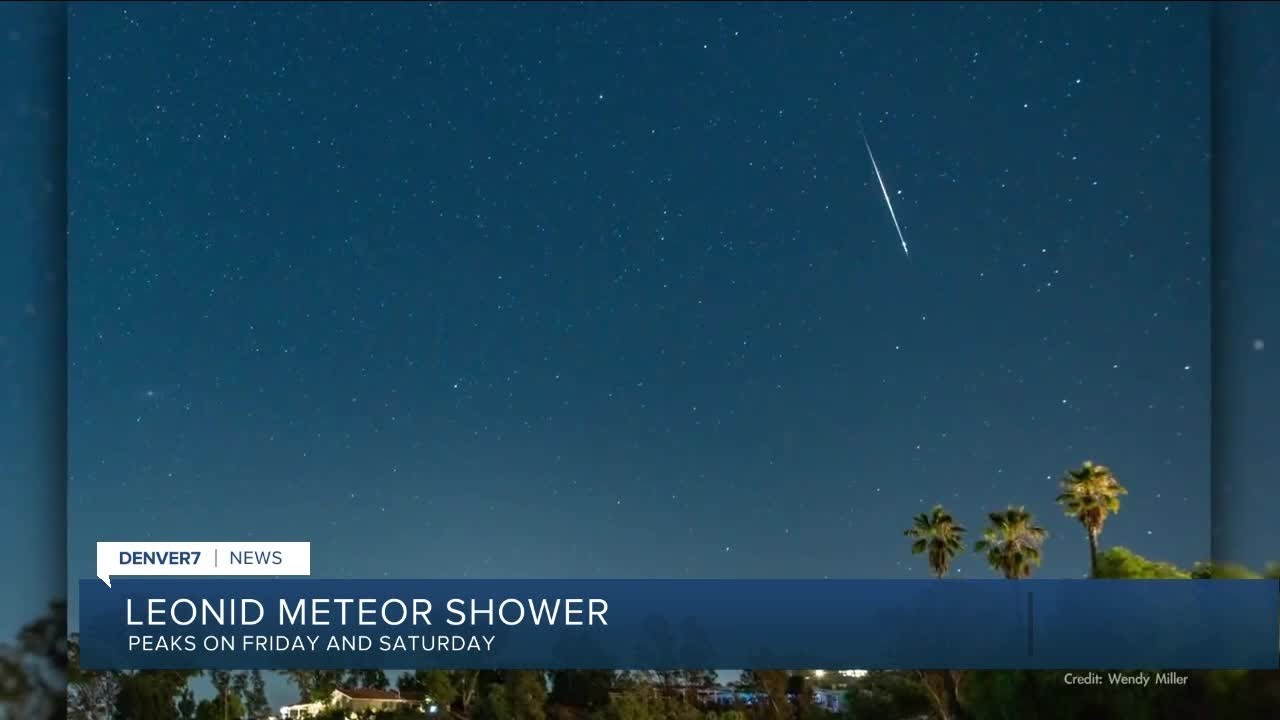Get ready to witness one of nature’s most awe-inspiring displays—the Leonid meteor shower is set to paint the night sky with its celestial brushstrokes.
As we gear up for this cosmic spectacle, let’s delve into the fascinating world of meteor showers, specifically focusing on the upcoming Leonids.
1. What are the Leonids? Unveiling the Cosmic Showers
A Celestial Ballet in Space The Leonid meteor shower is an annual event caused by Earth passing through the debris left behind by Comet Tempel-Tuttle.
Imagine our planet gliding through a cosmic minefield, with debris burning up upon entry, creating streaks of light across the night sky.
2. When and Where to Watch: Peak Meteor Viewing
Prime Time Stargazing: The Weekend Extravaganza This weekend marks the peak of the Leonid meteor shower.
Head outdoors during the early morning hours, preferably away from city lights, for the best viewing experience. Find a comfortable spot, lay back, and let the cosmic fireworks begin.
3. Understanding Meteor Showers: A Celestial Ballet
Meteor Showers 101: The Dance of Debris Picture a ballet where bits of comet debris gracefully pirouette through Earth’s atmosphere.
These celestial performers, or meteors, create luminous trails as they burn up due to friction with the air. The Leonids, known for their speed, offer a mesmerizing cosmic ballet.
4. Tips for Meteor Shower Watching: Astronomy Made Easy
Astronomy Hacks for Sky Gazers Watching meteor showers doesn’t require a Ph.D. in astrophysics.
Grab a blanket, dress warmly, and follow some simple tips—like letting your eyes adjust to the darkness—to enhance your meteor-watching experience.
5. The Science Behind Leonid Meteor Shower: Cometary Connection
Comet Tales: The Origins of the Leonids Comet Tempel-Tuttle, the cosmic sculptor of the Leonids, sheds debris as it travels through our solar system.
When Earth intersects this debris path, we witness the breathtaking result—a meteor shower that has captivated sky gazers for centuries.
6. Why Leonids are Special: Speed and Brightness
Zooming Through Space: The Swift Leonids One of the distinguishing features of the Leonids is their incredible speed.
Traveling at a whopping 44 miles per second, these meteors streak across the sky with unparalleled swiftness, leaving a lasting impression on those lucky enough to witness them.
7. Meteor Showers in Culture: Myths and Legends
Meteor Magic in Folklore Throughout history, meteor showers have been woven into the fabric of human culture, inspiring myths, legends, and even shaping our understanding of the cosmos.
Explore how different cultures interpreted these celestial phenomena.
8. Meteor Shower Photography Tips: Capturing Cosmic Beauty
Snapshots from the Sky: Shooting Stars on Camera For those eager to immortalize the Leonids in photographs, we’ve got you covered.
Learn some handy tips and tricks to capture the beauty of shooting stars with your camera.
9. Leonid Meteor Shower Calendar: Past and Future Shows
Time-Traveling Through Meteor History Take a trip down meteor memory lane and discover notable Leonid meteor showers from the past.
Additionally, peek into the future to find out when you can witness this celestial spectacle in the years to come.
10. Meteor Shower or Meteor Storm? Understanding Intensity
Shower vs. Storm: Meteorology Meets Astronomy Dive into the nuances of meteor showers and meteor storms.
While showers are regular occurrences, storms are more intense and rare displays, creating a celestial fireworks show that goes beyond the ordinary.
Basking in the Cosmic Glow
As we prepare to witness the mesmerizing Leonid meteor shower, it’s a reminder of the cosmic wonders that unfold above us.
The universe, with its celestial choreography, invites us to look up and marvel at the beauty of our cosmic neighborhood.
Conclusion: A Cosmic Symphony to Remember
As we embark on this celestial journey, remember to look up, marvel at the night sky, and savor the fleeting beauty of the Leonid meteor shower.
Nature’s fireworks are set to dazzle, providing us with a humbling reminder of our place in the vast cosmic expanse.
FAQs
Q1: Can I see the Leonid meteor shower from anywhere in the world?
Yes, the Leonid meteor shower is visible from various parts of the world. The key is to find a location away from light pollution for the best viewing experience.
Q2: Why are they called the “Leonids”?
They get their name from the constellation Leo, as the meteors appear to radiate from this point in the sky during the shower.
Q3: How many meteors can I expect to see during the peak?
The number varies, but on average, you can witness around 10 to 15 meteors per hour during the peak of the Leonid meteor shower.
Q4: Can I use a telescope to watch the meteor shower? It’s not recommended. Meteor showers are best observed with the naked eye, as telescopes limit your field of view.
Q5: What makes the Leonids unique compared to other meteor showers?
The Leonids are renowned for their incredible speed, bright flashes, and occasional meteor storms, making them a favorite among sky gazers.



